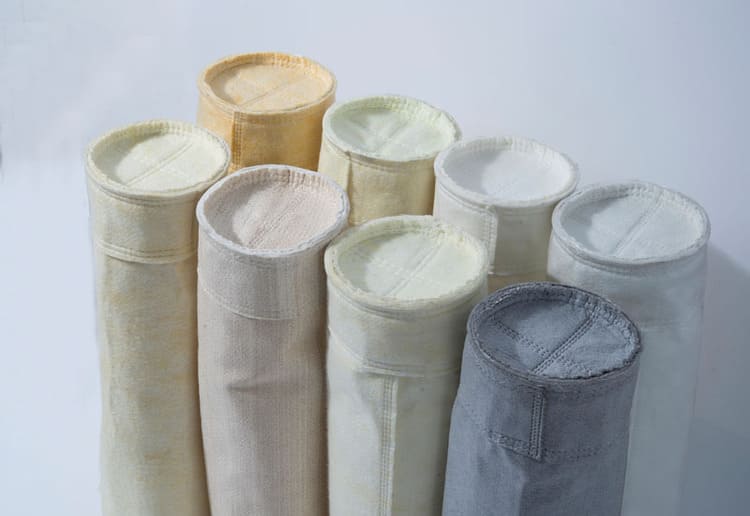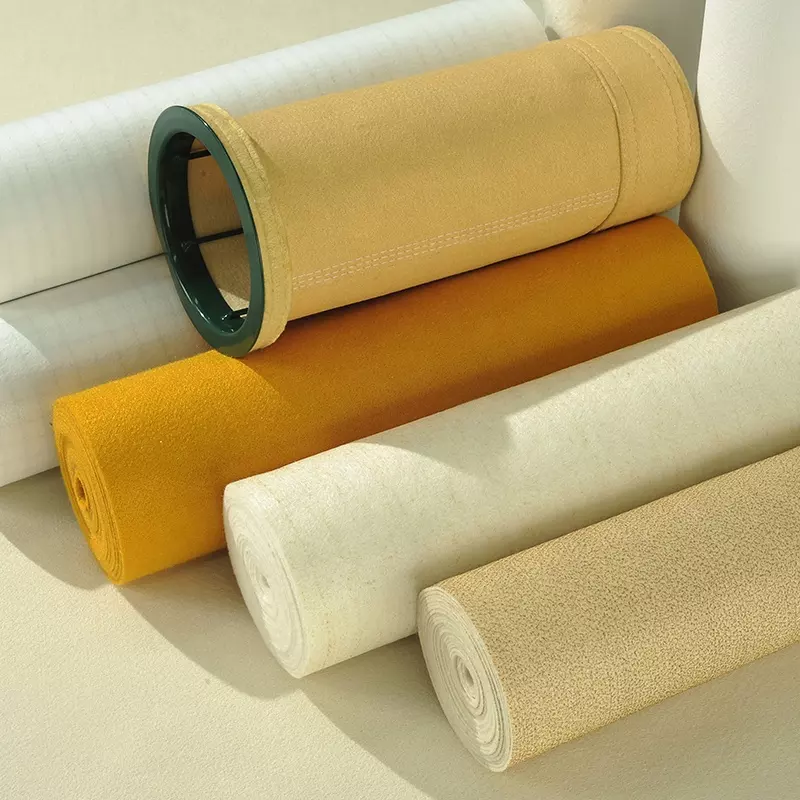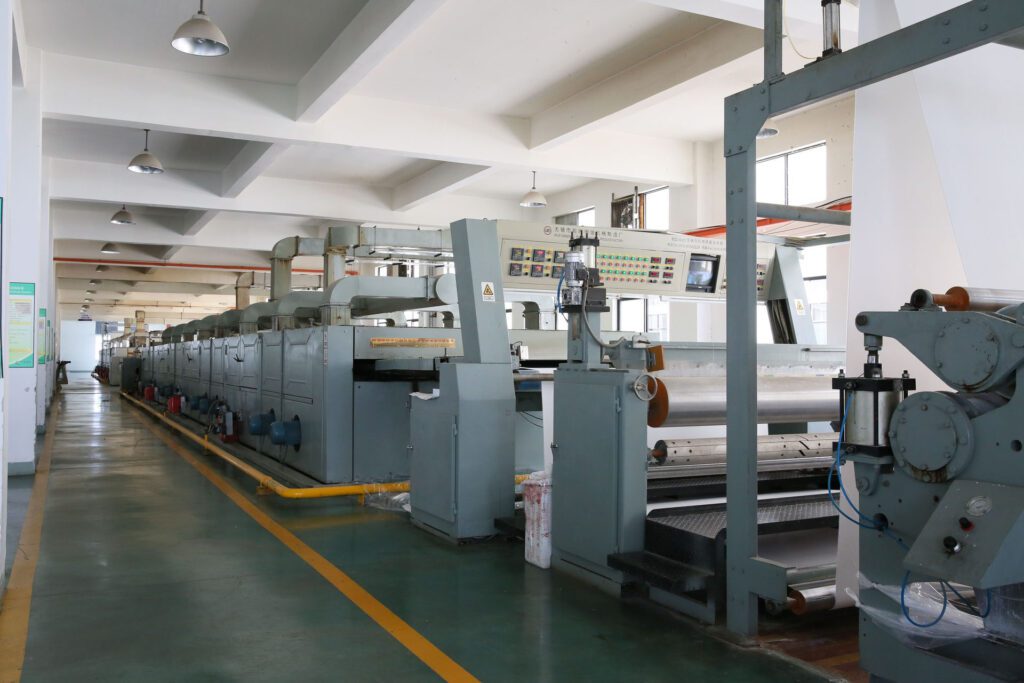Introduction

Dust collector filter bags, also known as fabric filters, are an essential component of many industrial air pollution control systems. These filters are designed to capture and remove fine particulate matter from the air, helping to keep the air clean and safe for workers and the environment.
In this article, we will take a closer look at how dust collector filter bags work and the various types of filter media that are used to capture different types of particles.
At the heart of a dust collector, a filter bag is a fabric filter media. This filter media is made up of fibers that are woven or felted together to create a porous material. The size of the pores in the filter media is carefully controlled to ensure that it can capture the desired size range of particulate matter.
When air containing dust and other particulate matter passes through the filter bag, the particles are trapped by the fibers in the filter media. The fibers of the filter media act like a net, with the particles getting trapped in the spaces between the fibers. This process is known as sieving.
The efficiency of a dust collector filter bag is determined by a number of factors, including the size of the pores in the filter media, the density of the fibers, and the type of filter media used. Different types of filter media are used depending on the type of particles that need to be captured. For example, fine fibers are used for capturing smaller particles, while coarser fibers are used for capturing larger particles.
One of the key advantages of dust collector filter bags is their ability to capture a wide range of particle sizes. This is because the fibers in the filter media are arranged in a random, non-woven pattern, which allows the filter to capture particles of different sizes and shapes. This is in contrast to mechanical filters, which use a series of screens or other physical barriers to capture particles.
Mechanical filters are typically only effective at capturing particles within a narrow size range, and they can become clogged easily if the particles are too large or too numerous.
Another advantage of dust collector filter bags is their ability to capture electrostatically charged particles. These particles are attracted to the fibers in the filter media, which allows them to be easily captured and removed from the air. This is especially important for industries that produce a lot of fine, dry particles, such as cement and mining operations.
In addition to the filter media, dust collector filter bags also include a support cage. The support cage helps to maintain the shape of the filter bag and provides a framework for the filter media. The support cage is typically made of metal or plastic, and it is attached to the top and bottom of the filter bag. This helps to ensure that the filter media remains in place and does not collapse under the pressure of air passing through it.
In general, industrial dust collector filter bags work by drawing in air containing dust and other particulate matter. The dust is then trapped and held onto the surface of the filter bag, while the clean air is released back into the environment. This process is repeated continuously, with the filter bags being periodically cleaned or replaced as needed to maintain their effectiveness.
Dust collector filter bags are an essential component of many industrial air pollution control systems. By trapping particles in their filter media, these filters help to keep the air clean and safe for workers and the environment. Different types of filter media are used depending on the type of particles that need to be captured, and support cages help to maintain the shape and integrity of the filter media. With their ability to capture a wide range of particle sizes, dust collector filter bags are an effective way to keep air pollution under control.
Dust collector filter bags need to be replaced on a regular basis in order to maintain their efficiency. The amount of time between replacements will vary depending on the type and size of particles being captured, as well as the amount of dust in the air. The frequency of replacement should be determined by an expert who can assess the environment and determine the best interval for filter bag replacements. Regular maintenance and replacement of dust collector filter bags is essential to ensure that they remain effective in capturing particulate matter.
By using dust collector filter bags, industries can maintain a safe and clean working environment, while reducing their impact on the local environment. With proper maintenance and regular replacement of filter bags, these filters can be a cost-effective way to keep air pollution under control.
Dust collector filter bags are an important part of many industrial air pollution control systems. These filters are designed to capture particles of various sizes and shapes, helping to keep the air clean and safe for workers and the environment. Understanding the different types of filter media used in dust collector filter bags, as well as their advantages, can help industries maintain an efficient and cost-effective air pollution control system.
Regular maintenance and replacement of filter bags are essential to ensure that they remain effective in capturing particulate matter. With the right dust collector filter bags, industries can maintain a safe and clean working environment while reducing their impact on the local environment.
Types Of Industrial Dust Collector Filter Bags And How They Work

There are several types of industrial dust collector filter bags, including woven and non-woven bags, felt bags, and mesh bags. These bags are used in industrial dust collectors to remove dust and other particulate matter from the air.
Woven and non-woven bags are made from a variety of materials, such as polyester, nylon, or fiberglass. These materials are chosen for their strength and durability, as well as their ability to capture and hold onto dust particles. Woven and non-woven bags use a weave pattern to create an interlocking formation that traps dust particles. They are typically washable and can be used multiple times before they need to be replaced.
Felt bags are made from a dense, porous material that is able to trap and hold onto dust particles. These bags are commonly used in high-temperature environments, as they are able to withstand temperatures up to 550 degrees Fahrenheit. Felt bags are made from a variety of materials, such as wool, polyester, and synthetic fibers. They are mainly used in baghouse dust collectors and offer good filtration efficiency.
Mesh bags are made from a fine mesh material, such as stainless steel or polypropylene. These bags are able to capture and hold onto very fine dust particles, making them ideal for use in applications where the dust particles are particularly small or lightweight. Mesh bags are made from a mesh material that allows air to pass through while trapping dust particles. Mesh bags are typically used in baghouse dust collectors and can be washed and reused multiple times. It is important to note that mesh bags have a lower filtration efficiency than other types of filter media.
The type and size of filter media used in dust collector filter bags will depend on the type and size of particles being captured, as well as the amount of dust and other particulate matter in the working environment. It is important to consult with an expert who can assess the environment and determine the best type of filter media for the application. Sofilt can help you select the right filter media for your dust collector filter bags. Our experienced team of experts can assess your environment and determine the most effective filter media for your application. Contact us today to learn more.
Things to consider when looking for a dust collector filter bag
When looking for a dust collector filter bag, there are several factors to consider in order to ensure that you choose the right type of bag for your specific needs. Some of the key factors to consider include the following:
Type Of Dust And Particulate Matter
Different types of dust and particulate matter have different characteristics, such as size, weight, and abrasiveness. This can affect the type of filter bag that will be most effective in removing it. For example, fine dust particles may require a mesh bag, while heavier, abrasive particles may require a sturdier, more durable bag.
Operating Conditions
The operating conditions of your dust collector, such as the temperature and humidity, can affect the type of filter bag that will be most effective. For example, felt bags are better suited for high-temperature environments, while non-woven bags may be more effective in damp or humid conditions.
Bag Material

The material of the filter bag can affect its performance and durability. Different materials have different strengths and weaknesses, and some are better suited to certain types of dust and operating conditions. For example, polyester bags are generally strong and durable, but may not be as effective at capturing very fine dust particles.
Bag Size
The size of the filter bag is important in ensuring that it fits properly in the dust collector and is able to capture all of the dust and particulate matter in the air. It is important to measure the dimensions of the dust collector and choose a filter bag that is the right size and shape to fit properly.
Bag Installation And Maintenance
The installation and maintenance of the filter bag can also affect its performance. It is important to follow the manufacturer’s instructions for installing and maintaining the bag, as well as cleaning and replacing it as needed to maintain its effectiveness.
Overall, choosing the right dust collector filter bag will require considering a range of factors, including the type of dust and particulate matter being collected, the operating conditions, the material and size of the bag, and the installation and maintenance requirements.
Conclusion

From the above information, it is clear that the work of a dust collector filter bag is crucial in controlling dust and other particulate matter. Every dust collection system requires the right type of filter bag in order to be effective, and choosing the right one is an important part of ensuring that your system is working properly.
Consult with Sofilt to determine the best type of filter media for your application, and make sure to consider all of the factors mentioned above in order to choose the best filter bag for your system. With the right filter bag, you can ensure that your dust collection system is working effectively.




